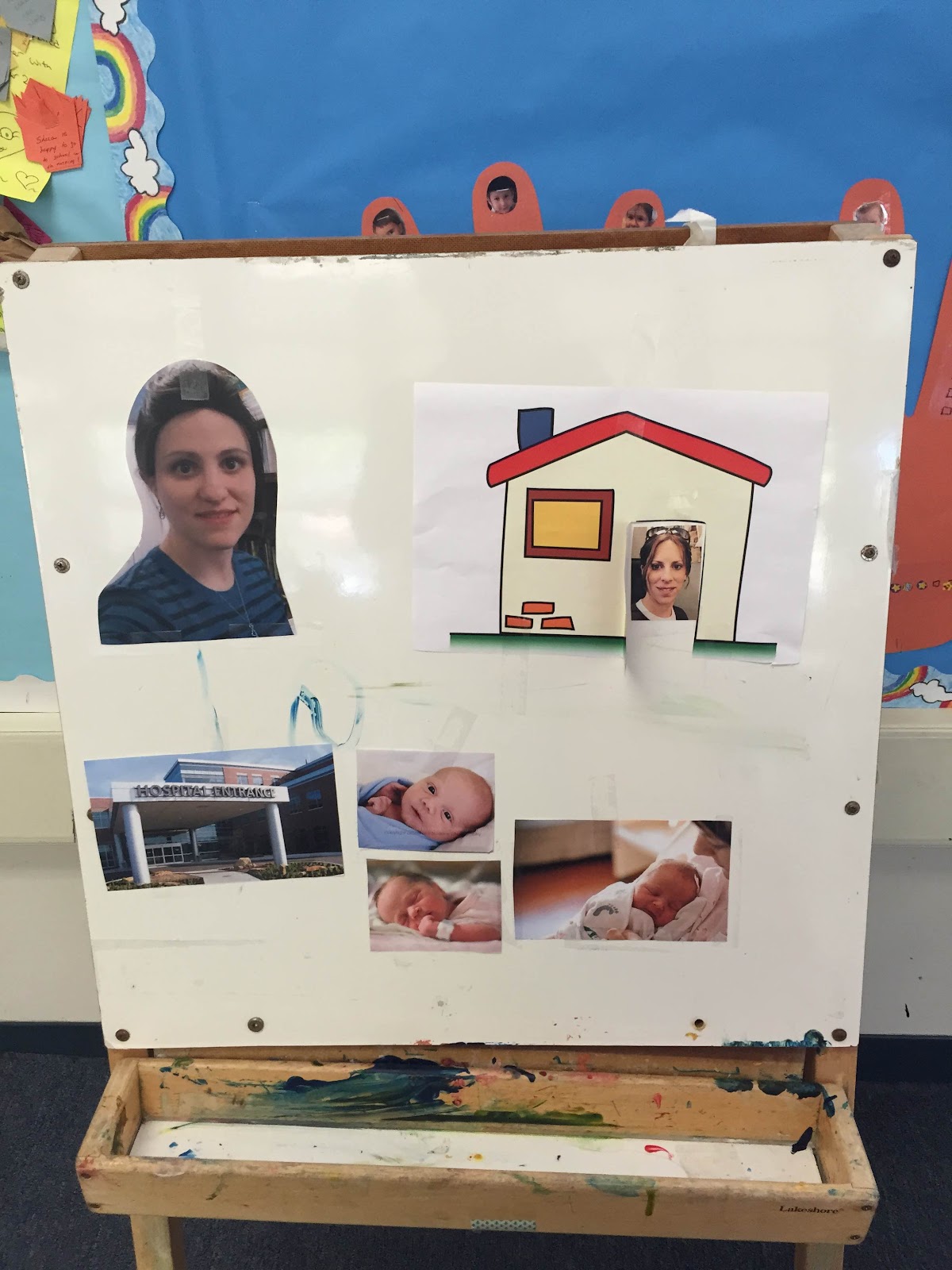At Gan Camarillo, we look at it as an opportunity!!
With Morah Shira reaching her due date TODAY-- (that's a big transition!) along with the many other smaller transitions that our children go through on a daily basis, we thought it an opportunity to share with you how smooth transitions are embedded into our Pre-school day!
We also thought there might be some tips that you- as a parent- can learn to foster your own smooth transitions!
Preparing the children for our upcoming exciting transition:
With pictures and puppet shows the children saw what would be happening! They had a chance to ask many questions, as well as spend 3 mornings with Morah Sarochel, alongside Morah Shira.
It was important for us that the children hear about the change, and process it with their own thoughts and questions.
The story began with Morah Shira's tummy getting bigger and bigger.... and the knowledge that there was a baby growing inside!
Very soon it would be time for Morah Shira to go to the Hospital (see picture of Hospital and new born babies) to have her baby!
Morah Sarochel was part of the scene, as the person who would be coming to school while Morah Shira would be at the Hospital with baby.
 |
| Max taking a peek at Morah Shira behind the door in her house! |
 |
 |
| Morah Sarochel spends time with the children |
Transitions in General:
- View transition times as opportunities for learning - Transitions hold many opportunities for skill-building, problem-solving, listening, following directions, and cooperation.
- Make transitions fun - Utilize your face and voice as teaching/transition tools---- If you can make wearing two mismatched mittens sound like the most fun and exciting thing in the world just by facial expressions and tone of voice, you will capture your child's attention facilitating a smooth transition!
You like to know what is coming next in your day, don't you?
Do you like it when you're right in the middle of something and someone demands that you stop right now and do something else? We need to be respectful of children and their choices. They need to mentally prepare for changes, and feel that they have some control within their environment and theur day.
Here is a glimpse at some of the routines of our day...
Children respond to structure and routines, and consistency enables them to feel safe, secure, and more in control and competent.
Give children adequate time to prepare for transitions, and be as consistent as possible- 5-10 minutes before it is time to clean up we have a familiar song that is sung.
"I looked at the clock and what did it say? We have 5 more minutes left to play!" (sung to the same tune each day)
This gives the children a chance to finish up what they are doing, as well as mentally prepare for the next activity- "cleaning up!"
When cleaning up, we have another song that the children immediately connect to "cleaning up":
Hi Ho, Hi Ho,
Its clean up time you know,
Put the toys away for another day
Hi Ho, Hi Ho!
Our Helping Han/Clean up tool:
We have a fun Helping Hands chart, with a picture of each child on it, that tracks the number of times a child helps clean up. More than a "reward" chart, this system provides a structure for the children to "self-correct" themselves, using number counting skills and a "routine" job that is done once the room is cleaned up.
The children excitedly sit on the rug next to this chart, and patiently wait to receive a sticker that they can place in the box next to their name. If they opt to not clean up (which barely ever happens) they will see that they do not receive a sticker. When the children enthusiastically count the stickers and squares, they can track the progress and how many "more cleanups" are needed to reach all 10 squares complete!
Waiting for turn to wash Hands before snack and lunch:
10 children at the sink at one time can be an overwhelming process! Lining up for a turn can also be a challenge for a 2 and 3 year old!The system we developed to foster a smooth "washing hands" transition is "place markers" on the floor, in a line leading up to the sink.
We have 2 sinks, so there are 2 lines- with numbered shapes.
The children enjoy the defined space, and predictability of the shapes, and encourages them to utilize their patience to wait their turn to wash their hands.
Circle Time Routines:
Sitting in their place in circle for 15-20 minutes can be challenging for a preschooler, but the routines we have embedded into our day make it attainable, and enjoyable for the children!
Pictured are the days of the week, along with an image of the "circle time routine" which will be used that day.
Mondays- the singalong Siddur book/audio, Tuesdays Instruments, Wednesdays Shapes etc...
In addition to the children learning the days of the week, they look forward to "following the chart" and being part of something greater than themselves!
Another part of our daily routine is "signing in" at home or school. Children can take their picture from the envelope and "velcro" check in to school, or if a child is home, place it on the "Home" side of the chart.
Lead up to Lag B'omer
Muka is spotted doing a Mitzvah! She earns a Puzzle piece for the class "Ahavat Yisrael" chart which will culminate on Lag B'omer (this coming Thursday.)
Lots of Love in our classroom!





No comments:
Post a Comment